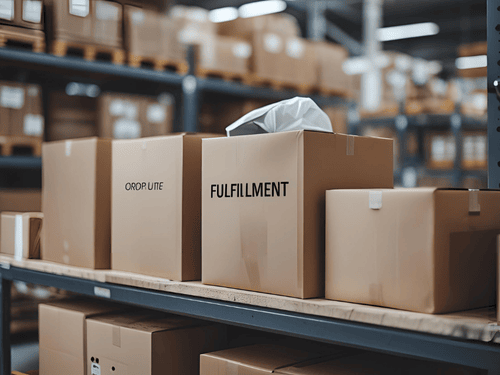Understanding the Role of Carriers in Fulfillment
Why Carrier Performance Matters
Carriers are central to the success of your fulfillment operations, affecting both speed and customer satisfaction. A delay in delivery or frequent issues can disrupt your entire supply chain. That’s why it’s essential to regularly assess how well your current carrier supports your fulfillment goals.
The Link Between Carrier and Fulfillment Efficiency
Efficient fulfillment requires dependable carriers who consistently meet delivery expectations. If your current provider can’t match your order volume or delivery timelines, fulfillment performance will take a hit. Poor carrier alignment often leads to backorders, bottlenecks, or missed customer expectations.
Red Flags That Suggest It’s Time to Switch
Missed Delivery Deadlines
Consistently late deliveries signal that your current carrier may be underperforming. If delays become a pattern despite clear service-level agreements, it may affect customer retention. Switching carriers could restore fulfillment reliability and help protect your brand’s reputation.
Lack of Tracking Transparency
Modern fulfillment depends on real-time visibility across every stage of shipping. If your current carrier lacks robust tracking capabilities or shares updates too slowly, fulfillment suffers. This lack of transparency can lead to higher customer service costs and reduced trust.
Frequent Damages or Errors
An increase in damaged packages, lost shipments, or delivery errors should not be ignored. These issues not only create extra fulfillment costs but also erode customer confidence. A more reliable carrier may offer stricter quality controls and better handling protocols.
Your Business Has Outgrown the Carrier
Scaling Issues During Peak Periods

If your carrier fails during peak seasons or promotional campaigns, they may not be equipped for your current scale. Fulfillment needs tend to grow with your business, especially with more SKUs and complex shipping requirements. A scalable partner can prevent disruptions when order volume spikes.
Geographic Limitations
Your carrier may be strong locally but fall short when you expand to new markets. Limited regional or international coverage can create fulfillment gaps that hinder growth. A broader carrier network often ensures smoother delivery performance across new territories.
Technology Integration Limitations
Poor API or Platform Compatibility
Fulfillment workflows rely heavily on automation and systems that talk to each other. If your carrier’s systems don’t integrate well with your warehouse management or order management platforms, that’s a serious bottleneck. Seamless integration supports faster decision-making and minimizes manual effort.
Lack of Fulfillment Data for Analysis
Insight-driven fulfillment depends on detailed reporting and performance analytics. If your current carrier cannot provide the data needed for fulfillment analysis, you lose valuable optimisation opportunities. A new provider that offers transparent metrics will empower better forecasting and planning.
Rising Costs and Hidden Fees
Unpredictable Rate Increases
If your carrier frequently increases rates without warning or clear justification, your fulfillment margins will shrink. Budgeting for logistics becomes harder when carrier costs vary wildly. A more stable partner can offer predictable pricing structures aligned with your fulfillment budget.
Extra Charges That Affect Profitability
Hidden fuel surcharges, residential delivery fees, or accessorial charges add up fast. These costs complicate fulfillment forecasting and lower your return on investment. A thorough carrier review may uncover better-priced options that align with your long-term fulfillment goals.
How to Make the Switch Smoothly
Start with a Carrier Performance Audit

Before making a switch, conduct a detailed audit of your current fulfillment and carrier metrics. This should include delivery times, error rates, tracking responsiveness, and rate structures. Data will help you make a fact-based decision that aligns with Vareya’s fulfillment strategy.
Phase the Transition Strategically
Switching carriers should be done in phases to avoid fulfillment interruptions. Start with a limited rollout and test performance under real conditions. This helps minimise disruption while ensuring your new provider meets expectations.
Communicate Internally and Externally
Your fulfillment team must be aligned during the carrier changeover. Customers and partners should also be updated if the switch affects delivery times or service zones. Proactive communication ensures a smooth experience and maintains operational trust.
Key Takeaways
Carrier performance plays a major role in the success of your fulfillment strategy. Signs like delivery delays, rising costs, poor tracking, and system mismatches often signal that it’s time to evaluate other options. By assessing your current fulfillment needs and switching carriers strategically, you can align logistics performance with your long-term growth goals.

